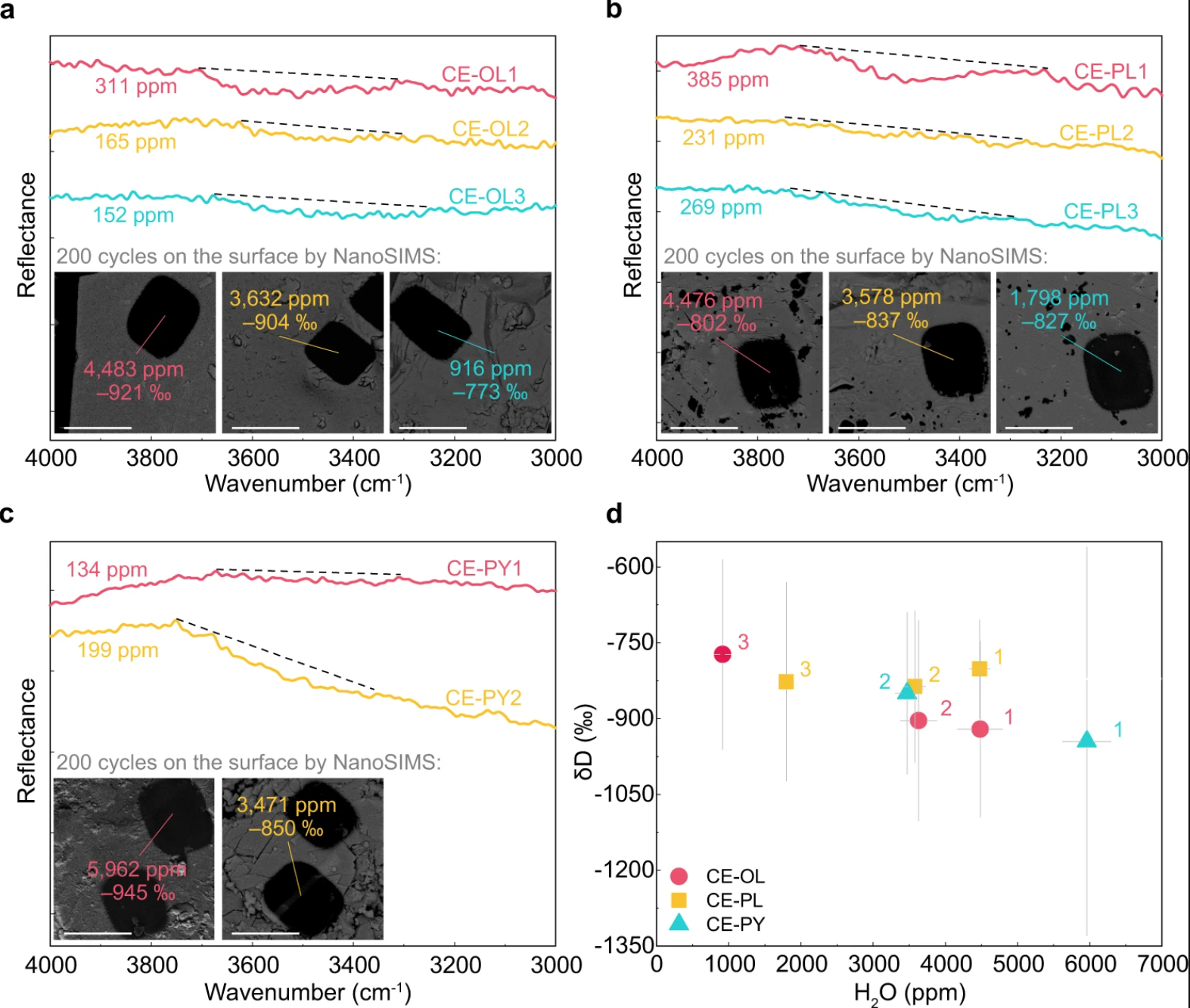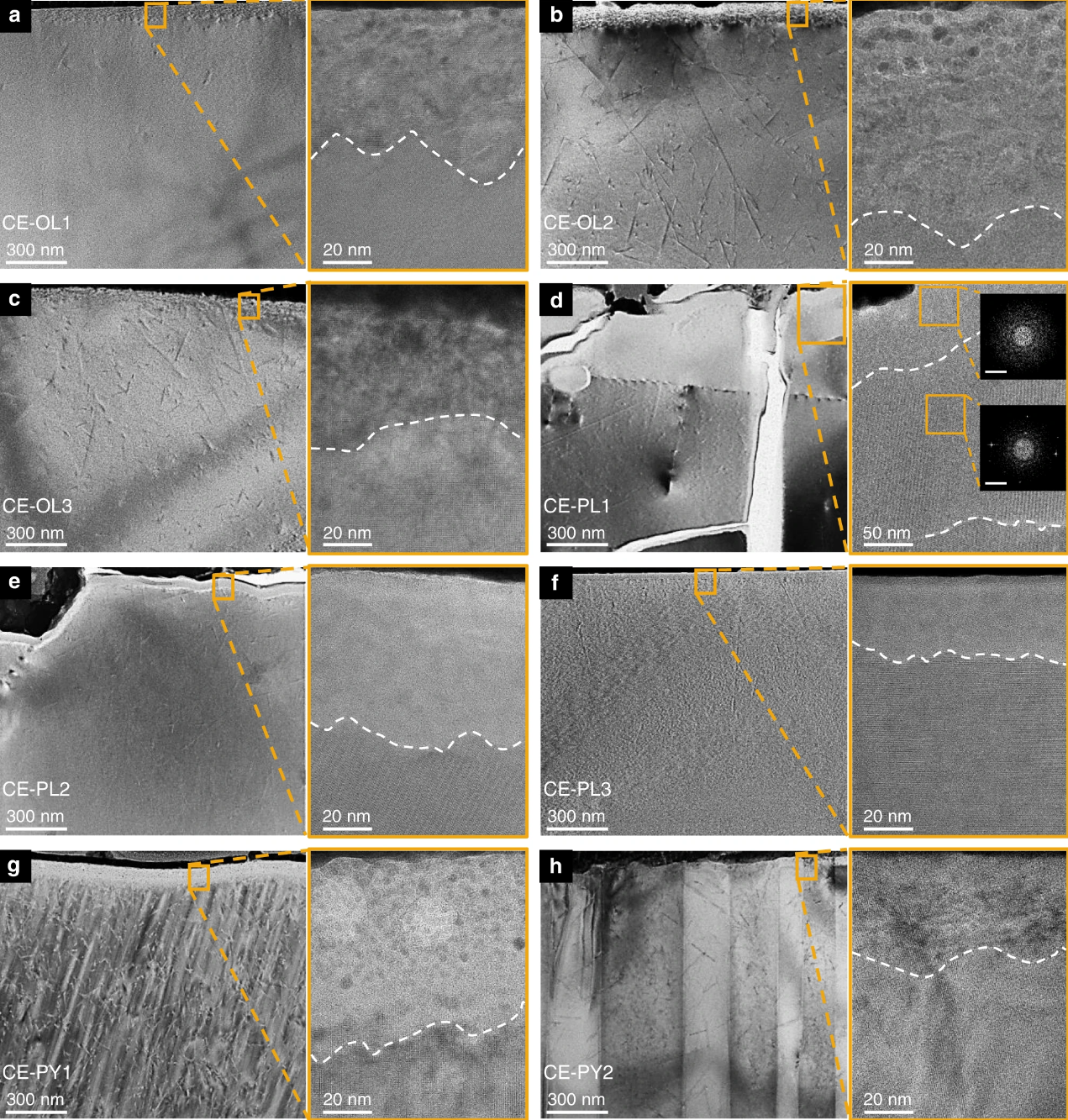Chinese scientists have found high water content in lunar soil samples brought back by the country's Chang'e-5 lunar probe, according to a peer-reviewed study published in Nature Communications on Saturday.
The study was conducted by a research team from the Institute of Geochemistry at the Chinese Academy of Sciences.

Water content and hydrogen isotope composition of lunar grains. /Nature Communications
Water content and hydrogen isotope composition of lunar grains. /Nature Communications
Through the analyses by infrared spectroscopy and nanoscale secondary ion mass spectrometry, the team found a large amount of solar wind-derived water in the samples' mineral surface, and estimated a minimum of 170 parts per million (ppm) water content attributed to solar wind proton implantation in lunar soils.
The results of spectral and microstructural analyses revealed the formation and storage of solar wind-derived water are mainly affected by exposure time, crystal structure and composition of minerals.

Characteristics of lunar grain surfaces. /Nature Communications
Characteristics of lunar grain surfaces. /Nature Communications
This study showed that lunar surface minerals are important "reservoirs" of water, and provided an important reference for water distribution in the mid-latitude region of the lunar surface.
Chinese scientists have discovered a new mineral – Changesite-(Y) – in Chang'e-5's lunar samples. The discovery was jointly released by the China National Space Administration and China Atomic Energy Authority on Friday.

